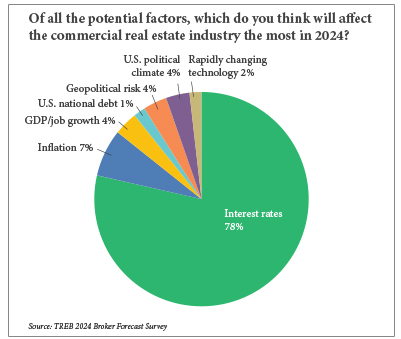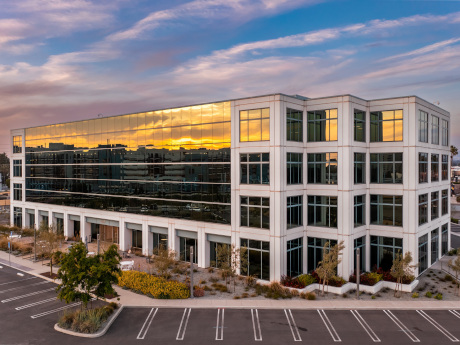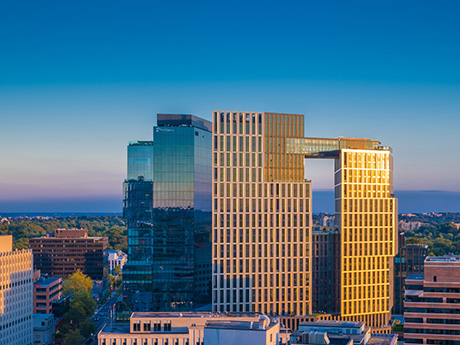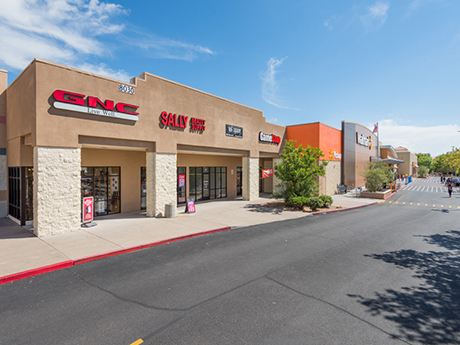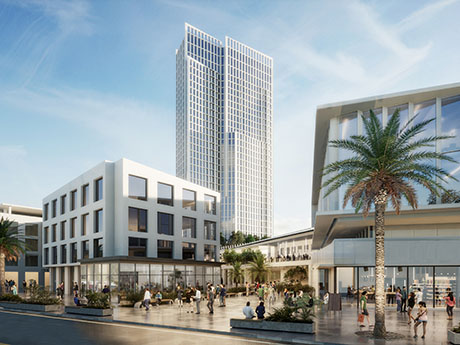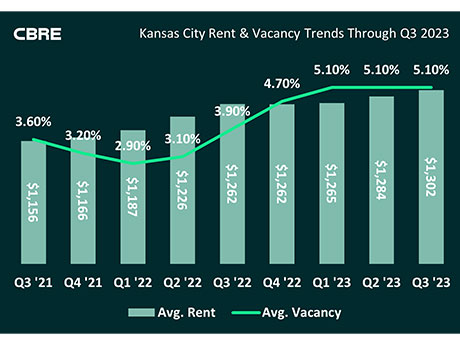By Taylor Williams For the last several years, as COVID-19, inflation and interest rate hikes have chronologically rocked the commercial real estate industry, the term “dry powder” has increasingly factored into investment discussions. While the term generally refers to cash or capital that is parked on the sidelines, 2024 could well be the year for its deployment. There are several basic reasons for endorsing this notion. First, at its December meeting, the Federal Reserve signaled that it would cut rates three times this year, which should theoretically make debt financing more accessible and less expensive — though the extent of that depends on the magnitude of the reductions. Second, as evidenced by the stock market tear following that announcement, investors are itching to deploy capital and will rally around just about any reason to do so, proven or not. Third, there is roughly $537 billion in commercial real estate loans that will mature next year, according to New York City-based Trepp. This staggering volume of impending maturities in a high-interest-rate environment all but assures that some assets will be forced into sales, whether by owners pre-default or lenders post-default. And finally, the 10-year Treasury yield — the benchmark rate against …
Market Reports
— By Robert Ritschel and Andrew Herron, Senior Vice Presidents, The Saywitz Company — The industrial sector for Orange County commercial real estate continues to be one of the strongest in the country. Vacancy rates in Orange County for industrial space remain at approximately 2 percent. What this means for tenants out in the marketplace is a continued struggle to find viable space. When combining limited availability with the fact that some of the buildings are older or obsolete, or may have lower ceiling height or reduced power, this makes the challenge even more difficult. With that said, we have seen the sales prices for industrial space level off and we have also now, for the first time in the past several years, begun to see landlords offer free rent and move-in concessions, and come off of their asking prices. The days of five or 10 different tenants looking at one available space in the marketplace seem to be over, and those with good credit looking to sign long-term leases clearly stand out from the mom-and-pop operator that may be looking to sign a short-term lease. Landlords on the industrial side appear to be much more conscious of the changing …
The Washington, D.C., metro area, known for its steady and stable economic foundation, stands at the forefront of a transformative period in the U.S. commercial real estate market. Amid the backdrop of an evolving macroeconomic market, it’s essential to recognize the adaptability and resilience of the metro D.C. area’s multifamily market. While recent capital market fluctuations continue to impact asset pricing across multiple sectors, the region’s fundamentals and property level performance have remained strong. According to Berkadia’s third-quarter multifamily market report, rent is up 3.6 percent in the District. Many properties are experiencing strong rent growth, which is anticipated to continue as there is a complete lack of future supply and the bulk of the apartment supply has delivered and is currently in lease-up. While some regions have headwinds that are cause for some investor caution, particularly regarding regulatory concerns, other areas like Northern Virginia are capturing significant interest from buyers and showcasing the region’s ability to still command buyer demand. This is, in many ways, the recurring narrative for the D.C. metro region: resilience supported by concrete fundamentals. Strong foundation In the D.C. metro area, the decline in supply is highly likely to continue to drive a noteworthy increase …
— By Anthony Johnson, President, Pegasus Group and Western Regional Director, X Team Retail Advisors; and AJ Johnson, Associate Broker, Pegasus Group — Looking back on the Albuquerque retail market for 2022 and 2023, I have to say that 2022 was the height of our boom in terms of the sale/lease of shopping center and freestanding pad sales, built-to-suit opportunities and redevelopment opportunities. The top consumers of these product types were chicken (QSR), coffee, car washes and cannabis, or as we affectionately called them, the “Four C’s.” Due to the sheer amount of activity in the pad user market, underutilized was a key word during this time. We saw vacant pad sites that were once considered unleasable or unsellable, perking the interest of investors, tenants and developers. By 2022 the negative effects of the pandemic had subsided, which resulted in the most robust year we’ve ever seen in terms of pad sales/leases. I’ve never seen anything like it. It was like a crescendo… and then, the “music” stopped. It was February of 2023 when the music started to get fainter. By August 2023, the music stopped, and now we’re seeing the aftermath of this. Meaning, many of the pad sites …
By Nick Fiquette, Sansone Group Lingering effects of COVID-19 In the aftermath of the global pandemic, the St. Louis real estate market finds itself at a crossroads, continuing to see the persistent impacts of COVID-19. Corporate strategies are evolving as companies evaluate their real estate footprints to accommodate the changing work environment and desires of employees. As lease expirations loom, businesses are engaged in a delicate dance of evaluating their physical space needs. The pendulum of work-from-home policies, initially adopted to streamline footprints, appears to be swinging back. Recently, Edward Jones listed a 227,000-square-foot Class A building that it owns on the market for lease and is planning on occupying it instead. This example could serve as a positive indicator for the future of the office market. The market is transforming as companies look to accommodate employee demands, prioritizing safe, walkable areas and amenity-rich buildings. This shift is particularly evident in the struggle faced by commodity real estate, as businesses increasingly gravitate toward locations that contribute positively to the employee experience. As a result, investors are remaining cautious about purchasing office assets due to surging interest rates and uncertainties surrounding the future of the office market. Corporate giants reevaluate real …
By Taylor Williams The Houston industrial market has generally performed quite well over the past few years, even as a global pandemic, record inflation and hard-hitting interest rate hikes have rocked the commercial real estate industry as a whole. Demand for industrial space has held firm due to rebounding energy prices and expansions in infrastructure and traffic at Port Houston, as well as organic population growth and economic diversification that has elevated the market’s role as a distribution hub. According to data from CBRE, the market has a 6 percent vacancy rate and posted 5.1 million square feet of positive net absorption through the first three quarters of 2023. The volume of new construction was on track to outpace absorption in 2023 when the report was released. But that was not the case in 2021 and 2022, years in which net absorption equaled and exceeded 7 million square feet, respectively. New deliveries totaled approximately 5.6 million and 5.4 million square feet in each of those years, driven not only by the aforementioned factors but also by a temporary uptick in demand for e-commerce services in the wake of the pandemic. In any market or asset class, when absorption exceeds supply …
— By Jeff Lefko, Executive Vice President, Hanley Investment Group Real Estate Advisors — Hanley Investment Group is expanding and opening its newest office in San Diego in early 2024. San Diego, the eighth most populous city and the fifth largest county in the United States, ranks second only to Los Angeles County in California, boasting a population nearing 3.28 million. With a substantial GDP of $206 billion, San Diego holds the 17th largest metropolitan area position in the U.S. and the fourth largest in California. The city’s economy thrives on defense, tourism, international trade and research/manufacturing sectors. Notably, in 2022, San Diego experienced an 8 percent growth in life science employment, reinforcing its position as a premier life science research destination. Attracting 28.8 million annual visitors, it stands as a prominent U.S. travel destination, generating approximately $13.6 billion in yearly spending and employing 214,000 San Diegans directly and indirectly. San Diego’s robust economy, diverse population, quality education, and prime location render it a desirable hub for commercial retail investment. The business-friendly climate further enhances its allure, while the limited supply of new retail construction helps maintain stable real estate fundamentals. The changing economy and rising interest rates have caused …
Atlanta’s industrial sector and its historically strong performance have fortified the city as a strategic Southeast location and gateway market nationwide. Activity, which has decreased since peak demand during the COVID-19 pandemic, is now returning to normalized levels. The net new requirement pipeline remains robust primarily due to the influx of manufacturing, advanced manufacturing, life sciences, automotive, alternative energy and data center projects. How owners and tenants invest in industrial properties has also shifted. Owners are seeking properties with short weighted average lease terms and investments below replacement cost. Meanwhile, occupiers are making moves to crisis-proof their networks with onshoring and nearshoring of production that was previously conducted overseas, and they’re adjusting their overall supply chain and logistics strategies to diversify and avoid dependence on one region or vendor. Players in the market remain cautiously optimistic, which has subdued demand, but that is expected to be short-lived once macro-economic conditions stabilize. High inflation and rising interest rates over the past 12 to 18 months have significantly contributed to decreased demand in Atlanta. However, with continued population growth and Atlanta’s central location in the Southeast, the metro area’s compressed demand will be short-lived. With that said, Atlanta’s industrial market remains strong …
— By Jeffrey Swinger, Executive Vice President | Las Vegas, Multifamily Investment Sales, Colliers — Las Vegas is on a roll right now, continuing to raise the bar year after year, and we are bullish on the long-term outlook of Southern Nevada’s future. UNLV’s Center for Business and Economic Research predicts that Southern Nevada’s population will gain 41,900 new residents in 2023 and increase another 2.4 percent in 2024. This wave of growth, coupled with strong local economic activity and enhanced infrastructure investments, has created more jobs and more demand for housing. With more than $8.12 billion of new major projects delivered in 2023, there is another $2 billion currently under construction with plans to deliver in 2024 and 2025. Additionally, there is another $17.25 billion of announced and proposed projects keeping Las Vegas’s momentum moving forward. Significant projects that were delivered in 2023 include the Fontainebleau, the MSG Sphere and the inaugural Formula 1 Heineken Silver Las Vegas Grand Prix. The Fontainebleau is the latest hotel/casino along the Strip, valued at $3.7 billion, and will add 3,644 rooms to the hotel inventory count. The MSG Sphere is Las Vegas’s newest entertainment venue featuring the largest spherical building in the …
By Max Helgeson, CBRE As the national real estate landscape undergoes transformative shifts, Kansas City has emerged as one of the region’s most attractive multifamily markets. There are a myriad of attributes making Kansas City an unrivaled destination to deploy capital in the heart of the Midwest. Here are six key areas that propel the market to the forefront of real estate investors’ considerations. Economic anchors, diversification Kansas City has one of the nation’s most diverse economies with no sector comprising more than 15 percent of overall employment. A national leader of several durable industries provides unmatched economic stability and significant risk mitigation for investors. Moreover, the metro’s strategic location in the heart of the U.S. and strong transportation infrastructure make it a favored logistical hub for corporations across the world. Finally, the market is a base for startups and entrepreneurs drawn to the area’s abundant talent pool and competitive office space rates. Strategic infrastructure, connectivity Infrastructure is a cornerstone of Kansas City’s rise to prominence. The city’s strategic network of highways, interstates, railways, fiber networks and a major airport not only facilitates connectivity but positions it as a hub for commerce. This strategic infrastructure acts as a magnet, pulling …


